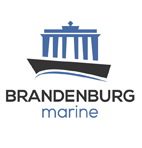Loss Prevention Advice
- Details
- News /
Below you will find a weekly report dated 9 April 2025, covering the period of 3 to 9 April 2025, where the following incidents were reported:
2 maritime security incidents in West Africa in the last 7 days
0 maritime security incidents in the Indian Ocean/Middle East in the last 7 days.
Full advisory at the following link.
https://britanniapandi.com/wp-content/uploads/2025/04/ARC-Weekly-Report-09.04.25.pdf
- Details
- News /
A safety alert regarding an incident where an explosion and fire aboard a liftboat injured workers.
An explosion and subsequent fire that occurred on a liftboat during well cleanup and testing operations. Two contract workers suffered second-degree burns.
This event underscores critical shortcomings in procedural controls, equipment readiness, and emergency response during offshore oil and gas operations. The explosion was caused by a gas accumulation on the liftboat deck during the draining of fluids from a test separator into a 500-barrel tank.
- Details
- News /
The time has arrived for them to get their flighted spongy moth (FSMC) certification ready if they are travelling to certain countries.
The FSMC flight season, during which females lay eggs and may deposit egg masses on vessels, lasts from May to October. The risk period for each port varies based on location and climate. FSMC egg masses can survive extreme temperatures and moisture, allowing larvae to hatch months or even years after being attached. If this happens in a country where FSMC is not native but the climate supports its lifecycle, it could significantly impact agricultural and forest resources.
- Details
- News /
Over the past week, 1-7 April, four incidents of armed robbery against ships in Asia (one CAT 2 incident, one CAT 3 incident and two CAT 4 incidents) were reported.
All incidents occurred onboard ships while underway in the Traffic Separation Scheme (TSS) of Singapore Strait (SS). The crew members were not injured in all four incidents. Engine spares and some items were stolen in three incidents, while nothing was stolen in one incident.



